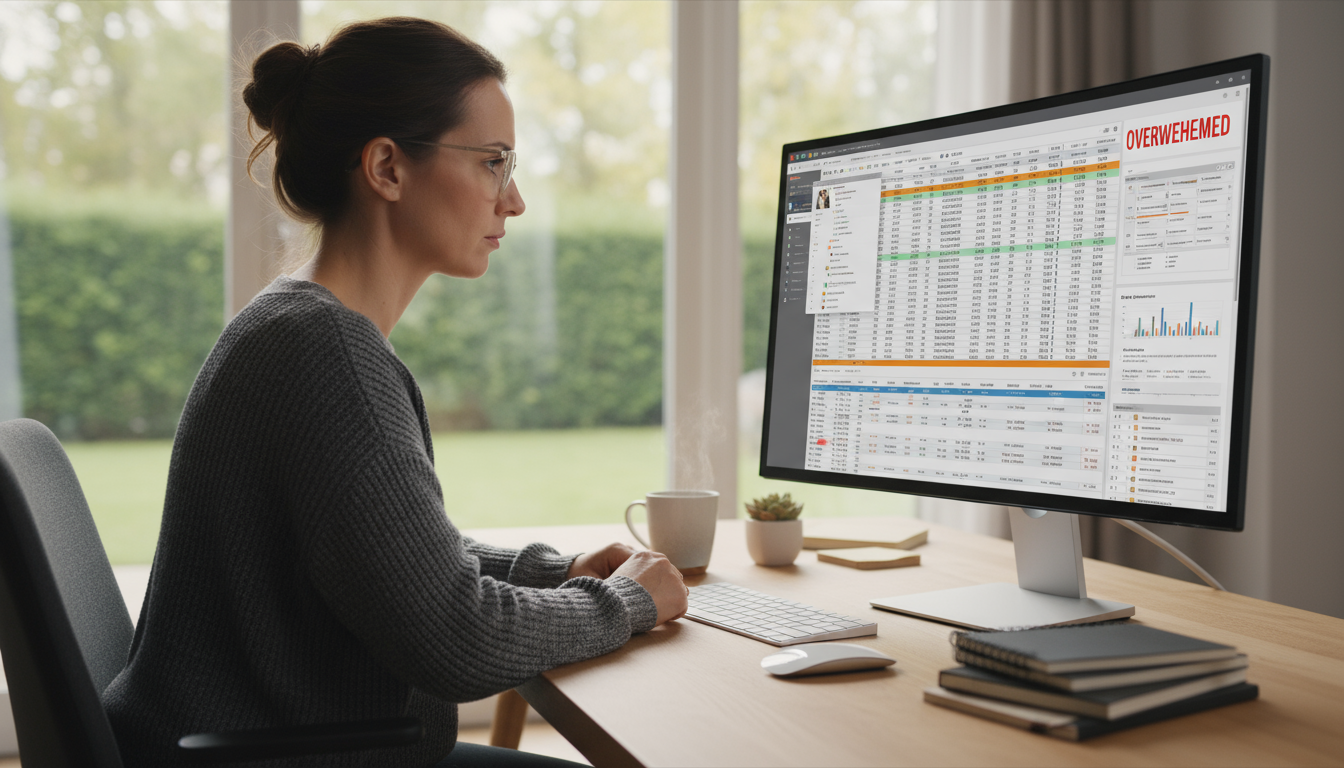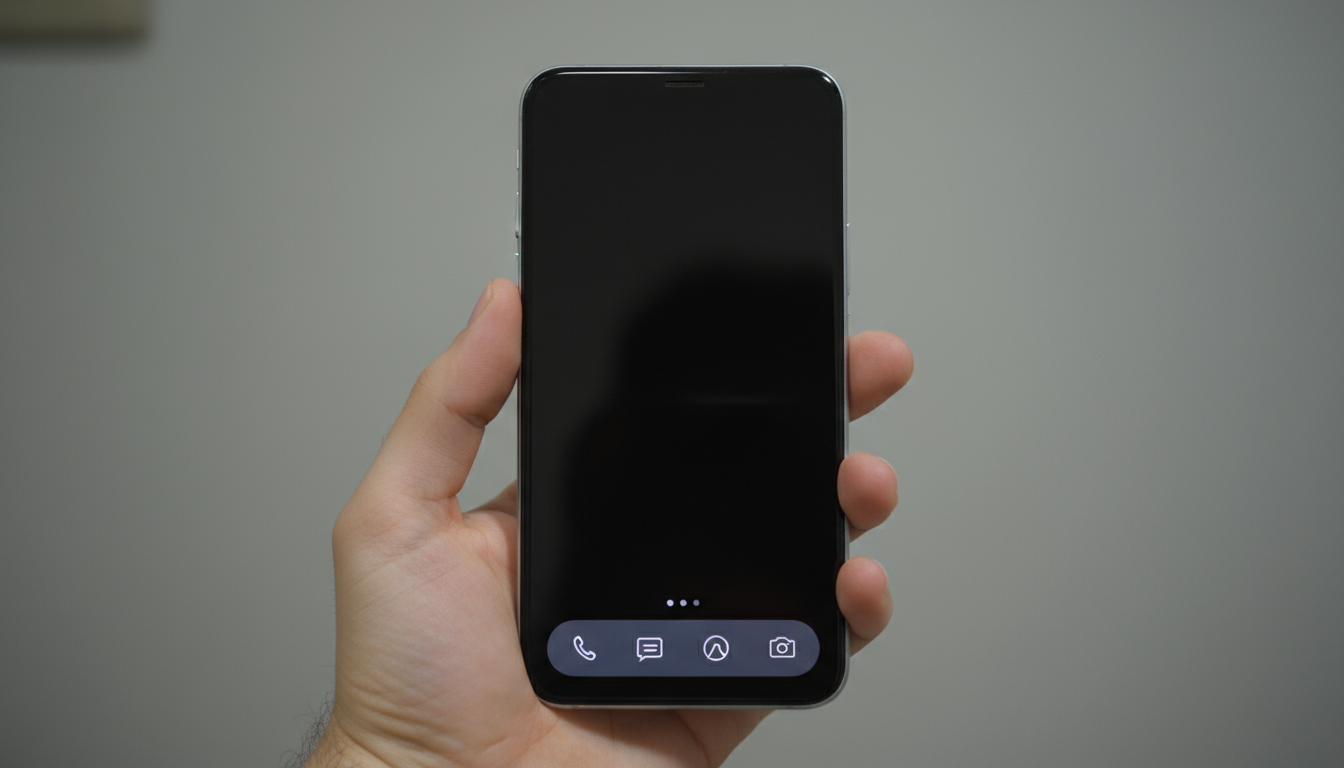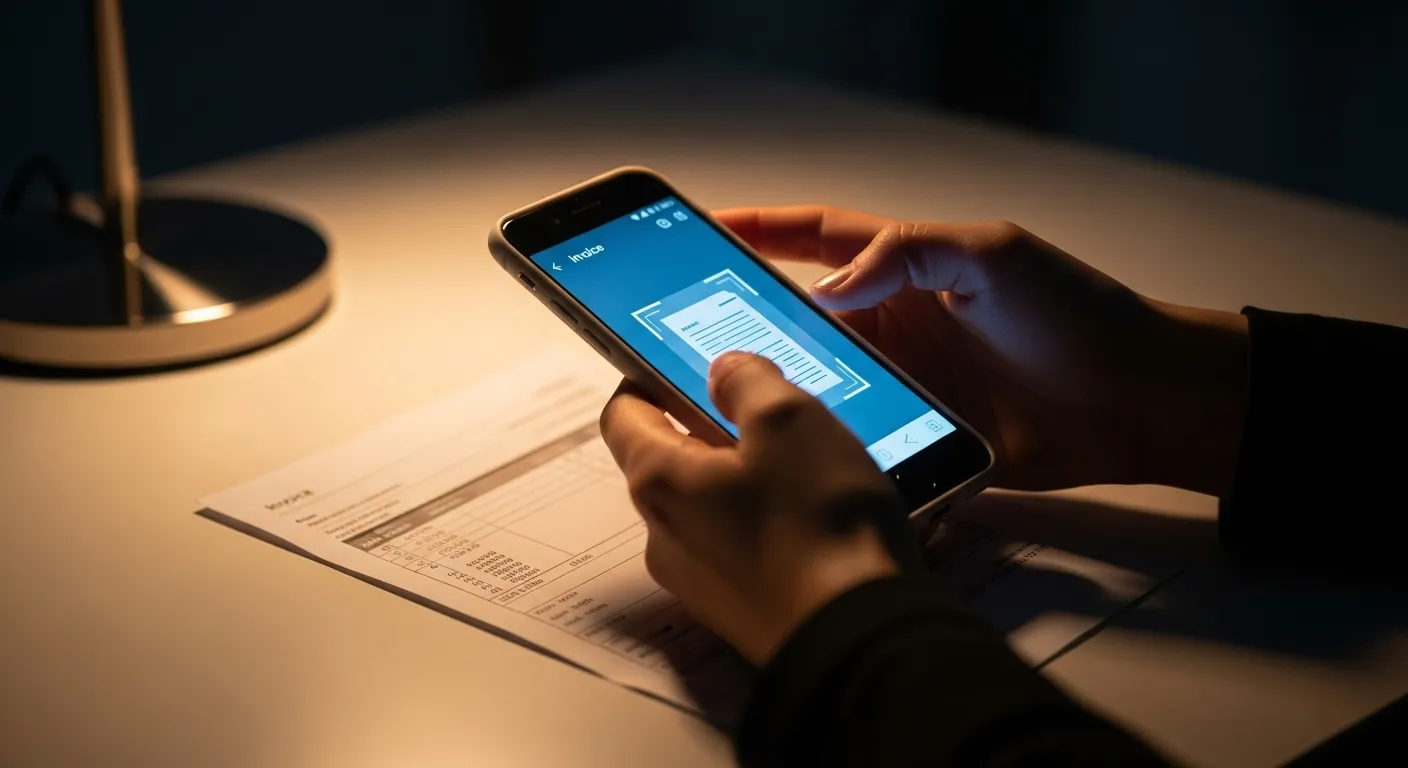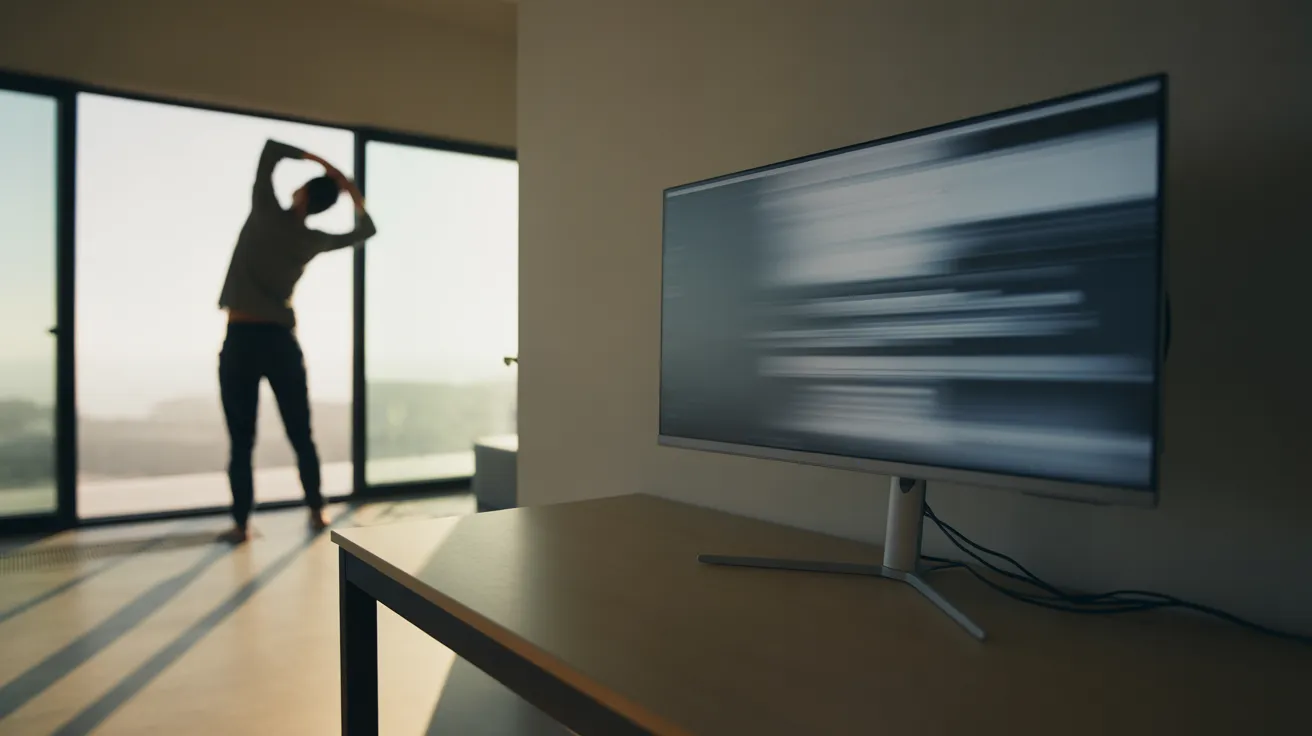
You’ve seen the images: a pristine desk, a single laptop, and a steaming mug of coffee. It’s the minimalist ideal, the promised land of productivity. But getting there feels like a monumental task. You imagine weekends spent scanning mountains of paper, deciphering complex software, and wrestling with a system that feels more complicated than the clutter it was meant to replace. This is where most people quit.
The secret isn’t a heroic, one-time effort. It’s not about finding the single “perfect” app that will magically organize your life. The truth is much simpler and far more achievable: a truly effective paperless workflow is built on a foundation of small, sustainable systems. It’s about creating tiny habits that, over time, compound into a state of effortless digital organization.
Forget the grand overhaul. We’re going to focus on low-friction wins—small changes you can implement in minutes that deliver an immediate sense of control and clarity. This is the core philosophy of The Focused Method. We believe that consistent, tiny actions always outperform sporadic, massive efforts. By focusing on the process, not just the outcome, you build a system that serves you, rather than a system you must constantly serve.
This guide will walk you through the practical steps to build that system. We will explore how to reclaim your focus, master your digital tools, and create a workflow that feels less like a chore and more like a natural extension of how you think and work. Let’s move beyond the fantasy of the perfect desk and build the reality of a focused, paperless life, one small habit at a time.
📚 Table of Contents
- The Four Foundational Micro-Habits for Digital Clarity
- The One-Screen Phone Tweak (5-Minute Win)
- The 10-Minute Desk Reset
- The 15-Minute Weekly Review
- The Micro Time Audit Snippet
- Essential Tooling for a Frictionless Digital Workflow
- Your Calendar as a Timeboxing Powerhouse
- The Simple Power of Timers
- Shortcuts: Your Secret Weapon for Saving Keystrokes
- Compounding Habits: From Micro-Wins to a Macro-System
- Putting It All Together: Worked Examples
- Scenario 1: The Manager with a Meeting-Heavy Schedule
- Scenario 2: The Solo Maker with an Unstructured Schedule
- Frequently Asked Questions About Going Paperless
- Is it about the tools or the habits?
- What are the switching costs, and how do I know when it’s worth it to change tools?
- How do I handle incoming physical mail and documents I can’t control?
- I tried a new hack and it didn’t stick. How do I know when to quit vs. when to push through?
- My company or team isn’t paperless. How can I maintain my own system?
- Your First Steps to a Paperless Future

The Four Foundational Micro-Habits for Digital Clarity
Going paperless isn’t about the scanner you buy; it’s about the habits you build. Before we even talk about specific apps or advanced techniques, we must establish a baseline of control over your digital and physical environments. These four micro-habits are your starting point. Each takes 15 minutes or less but creates a powerful ripple effect, making every subsequent step in your digital organization journey easier.

The One-Screen Phone Tweak (5-Minute Win)
Your smartphone is likely the biggest source of digital friction and distraction in your life. It’s designed to pull your attention, not protect it. This simple tweak reclaims your home screen, turning your phone from a reactive slot machine into a proactive tool. The goal is to eliminate decision fatigue and mindless scrolling every time you unlock your device.
Here’s the process. First, remove every single app from your main home screen. Yes, all of them. Move them to the second or third screen, or hide them in the App Library. Your home screen should be completely blank except for the core apps in your dock at the bottom—typically Phone, Messages, a web browser, and maybe your camera. That’s it.
Next, turn off all non-essential notifications. Go into your settings and ruthlessly disable banners, sounds, and badge icons for every social media, news, and shopping app. The only notifications you should allow are from actual humans trying to contact you directly (calls, texts) or calendar alerts for appointments you set. This single change stops your phone from dictating your attention. You now decide when to engage, not the other way around. This is the first, most critical step in building an intentional digital workflow.

The 10-Minute Desk Reset
A cluttered physical space creates a cluttered mental space. The constant visual noise of stray papers, tangled cords, and random office supplies drains a small amount of your cognitive energy. A desk reset is a non-negotiable ritual that bookends your workday. It signals to your brain when it’s time to start and when it’s time to stop, creating a clean slate for deep work.
At the end of each day, set a timer for 10 minutes. In that time, your only goal is to return your desk to its “ready state.” Put pens back in their holder. Straighten your keyboard and mouse. Wipe down the surface. Most importantly, deal with any paper that has landed there. Is it a bill? Scan it with your phone and file it digitally. An idea? Type it into your digital notes app. A document to review? Place it in a single, designated physical inbox to be processed later. The goal is not to complete all the tasks represented by the paper, but to get the paper itself out of your sight and into your system.
This simple habit makes starting the next day frictionless. You arrive at a calm, inviting workspace, ready to engage with your priorities, not yesterday’s leftovers. It’s a physical manifestation of the mental clarity a paperless workflow provides.

The 15-Minute Weekly Review
If you only adopt one habit from this guide, make it this one. The weekly review is the command center of your productivity system. It’s a 15-minute appointment you keep with yourself every week—same time, same day, no exceptions—to get clear, current, and creative. It’s where you process your digital inputs, plan your upcoming week, and ensure your actions align with your goals.
During this review, you’ll look at three things: what’s past, what’s present, and what’s next. Clear out your digital inboxes—email, downloads folder, and notes. Process any scanned documents from your physical inbox. Look at your calendar for the upcoming week. What are your key appointments? Where are the open blocks for focused work? Finally, define your priorities. A great tool for this is the 1-3-5 Rule. Each week, decide on 1 big thing, 3 medium things, and 5 small things you want to accomplish. This simple framework prevents overwhelm and ensures you’re making progress on what truly matters.

The Micro Time Audit Snippet
You can’t optimize what you don’t measure. Most people have a vague sense of where their time goes, but they are often wildly inaccurate. A time audit is the process of tracking your activities to get an objective picture of your day. But you don’t need a week-long, minute-by-minute spreadsheet to gain valuable insight. A micro-audit is enough.
Here’s how to do it. For just one hour on a typical workday, get a simple piece of paper or a blank digital note. Set a timer for 60 minutes. Every time you switch tasks, write down the time and the new task. That’s it. Switched from writing a report to checking email? Log it. Got distracted by a social media notification? Log it. At the end of the hour, look at the list. You will likely be shocked at how many times you switched contexts. This isn’t an exercise in judgment; it’s an exercise in awareness. This data is the first step in understanding your patterns so you can design a better, more focused digital workflow.

Essential Tooling for a Frictionless Digital Workflow
The best system relies on simple, versatile tools that you already have. The goal of a paperless life isn’t to collect shiny new apps; it’s to master the fundamentals. A powerful digital workflow can be built with just three core components: a calendar, a timer, and a way to create shortcuts. The magic is in how you use them, not which brand you choose.

Your Calendar as a Timeboxing Powerhouse
Most people use their calendar as a passive record of appointments. To build a truly productive workflow, you must transform it into an active, forward-looking plan for your time. This is achieved through a technique called timeboxing.
What is timeboxing? It’s the practice of allocating a specific, fixed period—a “box” of time—to a single task or a group of related tasks. Instead of a to-do list of floating tasks, you are giving every task a home on your calendar. This forces you to be realistic about what you can accomplish and protects your time from distractions and other people’s priorities.
Here is how to implement it. During your 15-minute weekly review, look at the priorities you identified using the 1-3-5 rule. Now, open your calendar. For each of those tasks, block out a realistic amount of time to work on it. For your “1 big thing,” you might block two 90-minute sessions. For your “3 medium things,” perhaps three 60-minute blocks. The key is to be specific. Don’t just block “Work on Project X.” Instead, block “Draft outline for Project X report.” This specificity eliminates the friction of starting. When the time arrives, you don’t have to think about what to do; you just do what the calendar tells you.

The Simple Power of Timers
A timer is the simplest yet most effective tool for managing focus. It introduces a sense of gentle urgency and helps overcome procrastination. The most famous technique is the Pomodoro Technique, which involves working in 25-minute focused intervals separated by 5-minute breaks. But you can use any interval that works for you.
The real power of a timer is its ability to break the spell of distraction. When you commit to focusing on a single task for a set period, you give yourself permission to ignore everything else. That email can wait 25 minutes. That idea can be jotted down and addressed after the timer goes off. You can use the timer on your phone, a physical desk timer, or a browser extension. The tool doesn’t matter. The act of starting the timer is a commitment to a short period of focused effort, which is the building block of all meaningful work.
To integrate this into your paperless workflow, use it in conjunction with your timeboxed calendar. When a calendar block for “Write report” begins, start a 25-minute timer and begin writing. Don’t check email, don’t browse the web. Just write. When the timer rings, take a 5-minute break. Stretch, get water, then start another timer. This method, known as batching—grouping similar tasks together—is incredibly effective for maintaining high-quality focus.

Shortcuts: Your Secret Weapon for Saving Keystrokes
A core principle of digital organization is to reduce friction. Every repeated keystroke, every time you type out the same phrase or email address, is a tiny moment of friction. These moments add up. Text expansion shortcuts are one of the most underrated digital workflow tips you can implement.
A text expander is a simple utility (often built into your operating system or available as a small app) that allows you to create short abbreviations that expand into longer blocks of text. Think of it as an autocorrect you control.
Here are some exact steps to get started. On a Mac, go to System Settings > Keyboard > Text Replacements. On Windows, you can use features in some apps or download a tool like AutoHotkey. Create your first shortcut. For “Replace,” type `!addr`. For “With,” type your full mailing address. Now, any time you type `!addr` followed by a space, it will instantly expand. You can create shortcuts for your email address (`!eml`), common email replies (`!thanks`), project codes, or even entire paragraphs. This small automation saves seconds every time, but over a year, it adds up to hours of saved typing and reduced cognitive load.

Compounding Habits: From Micro-Wins to a Macro-System
Individual hacks are useful, but their true power is unleashed when they are chained together. This is the principle of compounding. Just as small, consistent investments grow into a large fortune, small, consistent habits grow into a robust and nearly automatic paperless workflow. The goal is to create a seamless loop where one good habit naturally triggers the next.
Let’s see how the micro-habits and tools we’ve discussed can be linked. Your day ends with the 10-Minute Desk Reset. As you clear your physical desk, you scan a stray invoice with your phone and it lands in your digital inbox. This act primes you for the next step. On Friday afternoon, your calendar reminds you it’s time for your 15-Minute Weekly Review. You open that digital inbox, process the scanned invoice, and clear out your emails.
During that same review, you use the 1-3-5 Rule to set your priorities for the coming week. With those priorities defined, you immediately open your calendar and use timeboxing to schedule focused work sessions for each task. When Monday morning arrives, you don’t waste energy wondering what to do. You simply look at your calendar, see the first time-blocked task, start a timer, and get to work. Each step flows logically into the next, creating a self-reinforcing system of clarity and control.

The Danger of Over-Optimization
As you become more comfortable with your digital organization, a new danger emerges: the temptation to over-optimize. This is the trap of spending more time tweaking your system than actually using it to do work. It’s a form of “productive procrastination” where you feel busy—researching new apps, creating complex tagging systems, redesigning your digital filing structure—but you aren’t making real progress.
The solution is to adopt a “good enough” mindset. Is your current system working? Is it helping you focus and produce results? If yes, resist the urge to change it just because a new tool is released. The cost of switching systems, known as switching costs, is often higher than you think. It includes the time to learn the new tool, migrate your data, and rebuild your habits. This energy is almost always better spent on doing your actual work.
A healthy system is one that is reviewed periodically, perhaps once a quarter, not constantly. If you identify a specific, recurring point of friction, then it’s appropriate to look for a targeted solution. But don’t chase the phantom of the “perfect” system. A simple, consistent system that you use every day will always outperform a complex, “perfect” system that you only admire.

Putting It All Together: Worked Examples
Theory is one thing, but practice is what matters. Let’s explore how two very different professionals might apply these principles to build a custom paperless workflow. These scenarios will show you how the same core habits and tools can be adapted to fit unique needs.

Scenario 1: The Manager with a Meeting-Heavy Schedule
Meet Sarah, a department manager. Her days are dominated by back-to-back meetings, a constant influx of emails, and frequent interruptions from her team. Her biggest challenges are context-switching and protecting the small pockets of time she has for her own strategic work. Paper is a constant problem, with meeting handouts, signed forms, and strategy notes piling up.
Here’s how Sarah builds her system:
Habit Integration: Sarah’s most critical habit is the 15-Minute Weekly Review, which she schedules for Friday at 4:00 PM. During this time, she scans all paper documents accumulated during the week using a simple phone app. She then uses the 1-3-5 Rule to identify her key leadership priorities for the next week, separate from her meeting obligations.
Tooling Strategy: Sarah’s calendar is her command center. After her weekly review, she immediately uses timeboxing to block out “focus time” in the few open slots she has. She blocks 90 minutes on Tuesday morning for “Review Q3 Budget Draft” and 60 minutes on Thursday for “Prepare Team Performance Reviews.” These are non-negotiable appointments with herself. To handle her email, she uses batching. She schedules three 30-minute blocks per day for email processing. Outside of these blocks, her email is closed. To manage meeting notes, she uses a digital notebook app. Before each meeting, she creates a new note from a template, and after, she immediately emails the action items to the attendees. This closes the loop and prevents loose paper from ever being created.

Scenario 2: The Solo Maker with an Unstructured Schedule
Now consider David, a freelance graphic designer. His challenge is the opposite of Sarah’s. He has long, unstructured days with few external commitments. His biggest struggles are procrastination, staying focused on a single project for long stretches, and organizing a sea of digital assets—inspiration files, project drafts, and client feedback.
Here’s how David builds his system:
Habit Integration: David’s cornerstone habit is the 10-Minute Desk Reset at the start and end of his day. This ritual signals the transition into and out of “work mode,” which is crucial when working from home. He also performs a daily version of the weekly review—a 5-minute “Daily Shutdown” where he decides on his one most important task for the next day. This prevents him from waking up and feeling adrift.
Tooling Strategy: For David, the timer is his most valuable tool. He uses the Pomodoro Technique religiously to break his large, creative projects into manageable 45-minute focus sessions. This helps him overcome the initial inertia of starting a big project. He uses timeboxing not for meetings, but for different phases of the creative process. His calendar might have blocks for “Research & Moodboarding” in the morning and “Design Execution” in the afternoon. To manage his digital files, he establishes a strict, templated folder structure for every new project: `[ClientName] > [ProjectName] > 01_Brief`, `02_Assets`, `03_Drafts`, `04_Final`. This disciplined approach to digital organization means he never wastes time searching for a file, keeping his creative momentum flowing.

Frequently Asked Questions About Going Paperless
Transitioning to a new way of working naturally brings up questions. Here are answers to some of the most common concerns we hear at The Focused Method, designed to give you the confidence to start and stick with your new paperless workflow.
Is it about the tools or the habits?
This is the most important question, and the answer is clear: it is always about the habits. A person with strong, consistent habits and basic tools will always be more organized and productive than someone with the most expensive, advanced tools but no system. Focus 90% of your energy on establishing the core habits: the daily desk reset, the weekly review, and the practice of timeboxing. The tools are there to support the habits, not create them. Start with the calendar, notes app, and timer already on your phone and computer. Master the process first, then upgrade your tools only when you identify a specific limitation.
What are the switching costs, and how do I know when it’s worth it to change tools?
Switching costs are all the resources—time, money, and mental energy—required to move from one system to another. This includes researching the new tool, paying for it, learning its features, migrating your old data, and re-establishing your habits within the new interface. These costs are almost always underestimated. You should only consider switching tools when your current tool has a clear, unavoidable limitation that is actively preventing you from doing your work efficiently. Don’t switch because of a slick marketing campaign or a feature that seems “nice to have.” Switch only when you have a persistent, painful problem that a new tool is specifically designed to solve.
How do I handle incoming physical mail and documents I can’t control?
A completely paperless life is unrealistic for most people. The goal is to be “paper-less,” not paper-zero. The key is to have a simple, ruthlessly efficient system for processing the paper that does enter your life. Designate one single physical inbox—a simple tray on your desk. All incoming mail, receipts, and documents go here and only here. Then, as part of your daily or weekly review, process this inbox to zero. Each item has one of four fates: it’s scanned and filed digitally (then shredded), it’s an action that gets added to your to-do list, it’s an event that goes on your calendar, or it’s trash.
I tried a new hack and it didn’t stick. How do I know when to quit vs. when to push through?
First, give any new habit a fair chance—at least two weeks of consistent effort. It takes time for a new behavior to feel natural. During this period, ask yourself: is this hack failing because it’s a bad fit for my workflow, or is it failing because I’m resisting the discomfort of change? If it genuinely adds friction, complicates a simple process, or doesn’t solve the problem you thought it would, then it’s a bad fit. Abandon it without guilt. But if it feels difficult simply because it’s new, that’s often a sign you should push through. Focus on making it as easy as possible to start. A “2-minute rule” can help: just do the first two minutes of the habit (e.g., just open your calendar for the weekly review). Often, starting is the hardest part.
My company or team isn’t paperless. How can I maintain my own system?
Focus on what you can control. You can’t change your entire organization’s workflow, but you can manage your personal “interface” with it. When someone hands you a document, your process remains the same: it goes into your physical inbox to be scanned and processed later. When you attend a meeting, take notes on your laptop or tablet instead of a paper pad. You can be a bridge between the paper-based world and your own digital system. The key is to have a reliable process for converting any physical input into a digital asset as quickly as possible so that it can be integrated into your workflow.

Your First Steps to a Paperless Future
We’ve covered the mindset, the habits, the tools, and the practical application of building a sustainable paperless workflow. It can feel like a lot of information, but remember the core principle: small systems beat heroic effort. You don’t need to do everything at once. The goal is to build momentum with a few high-impact, low-friction actions.
The journey to effective digital organization is not a sprint to a finish line called “perfection.” It is a continuous practice of making small, intentional choices that reduce friction and increase focus. It’s about building a system that serves you, freeing up your time and mental energy for the creative, strategic, and meaningful work that truly matters. By prioritizing consistency over intensity, you create a workflow that is not only productive but also sustainable and, most importantly, calm.
Don’t let the pursuit of the perfect system prevent you from starting with a good one. Progress is the goal. Here are three simple actions you can take today, right now, to begin your journey.
Start Today: Your 3-Action Plan
- Execute the One-Screen Phone Tweak. Take five minutes right now. Clear every app off your main home screen. Leave only the dock. Turn off all non-human notifications. This is your first, powerful step in reclaiming your attention.
- Schedule Your First Weekly Review. Open your calendar and create a recurring 15-minute appointment with yourself for this Friday. Title it “Weekly Review.” Showing up for this one appointment is the single most important commitment you can make to your new system.
- Set Up One Text Expansion Shortcut. Go into your computer’s keyboard settings and create a single shortcut for something you type frequently, like your email address (`!eml`). Use it once. This will give you a tangible feel for the power of small digital efficiencies.
Disclaimer: This article is for informational purposes only and does not constitute medical, financial, or legal advice. Please consult with a qualified professional for advice tailored to your specific situation. For more information on the psychological effects of productivity and focus, you can visit the websites for the American Psychological Association at https://www.apa.org or the National Institute of Mental Health at https://www.nih.gov.






